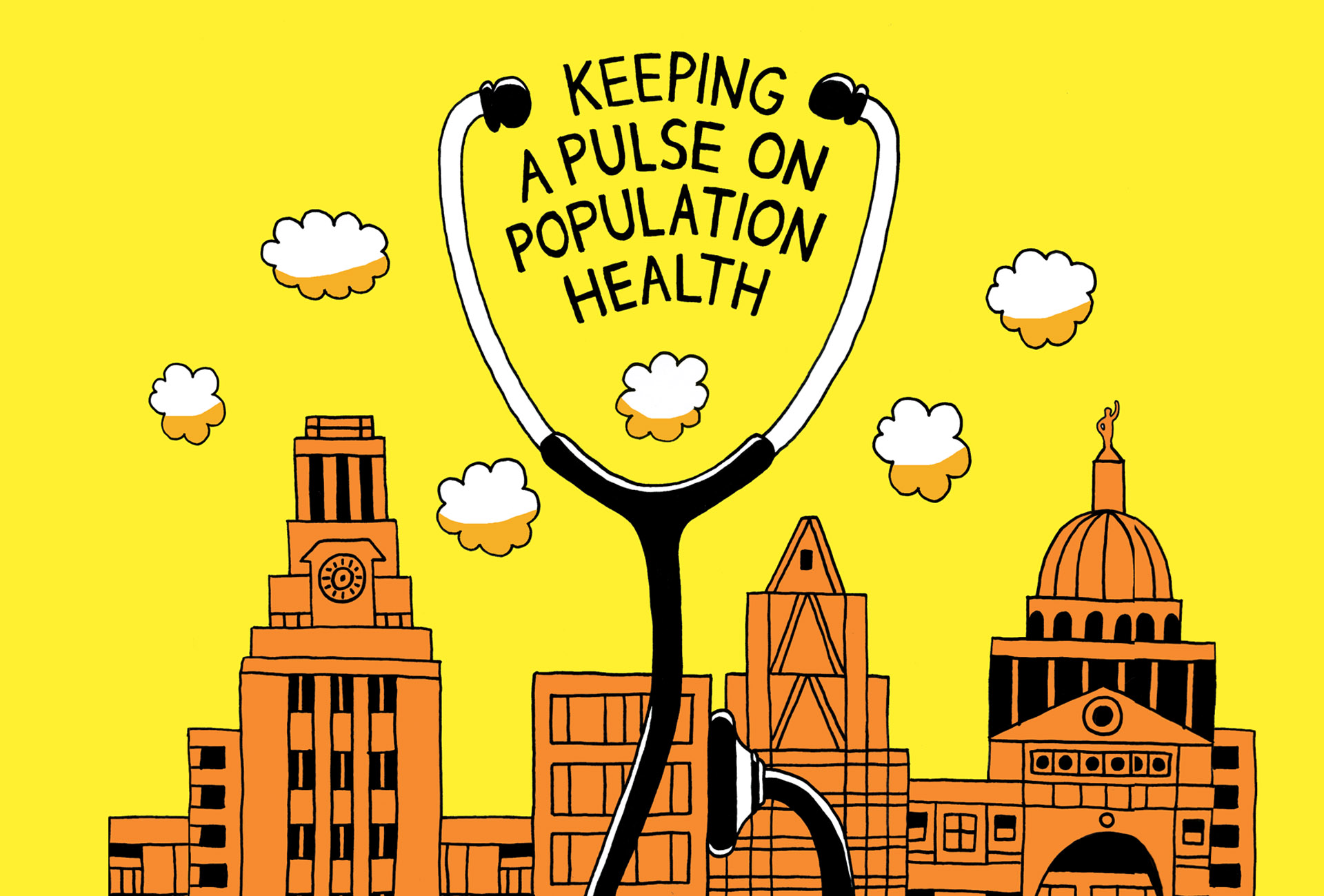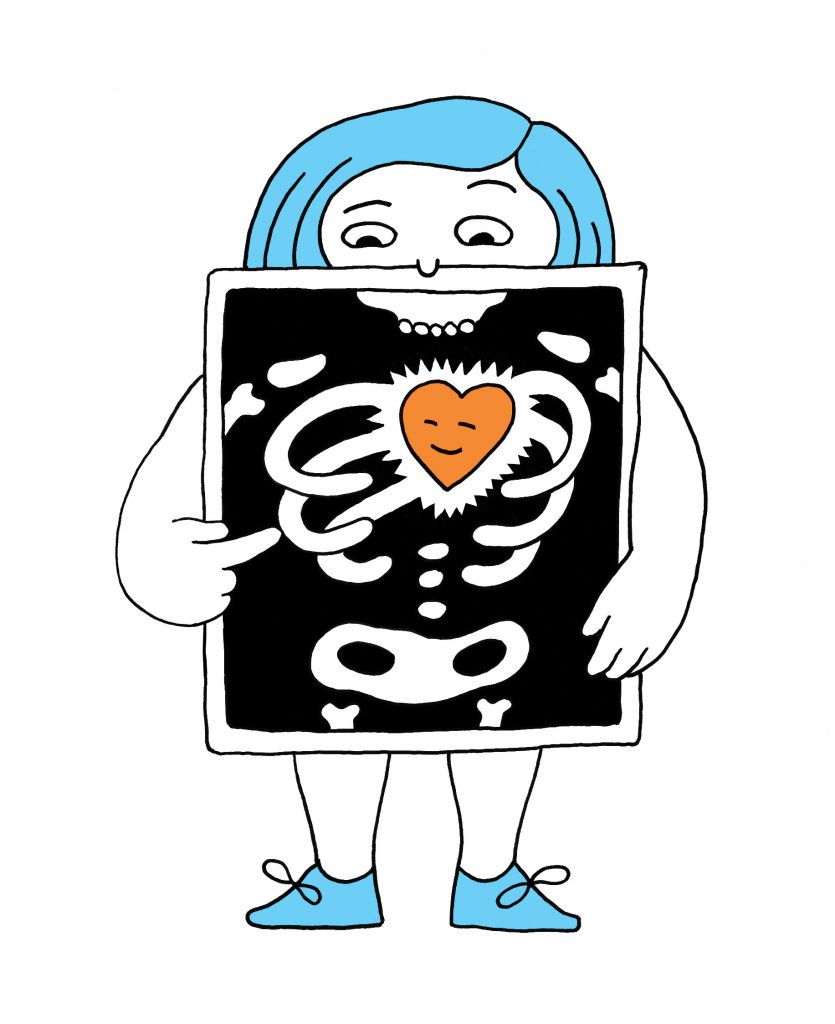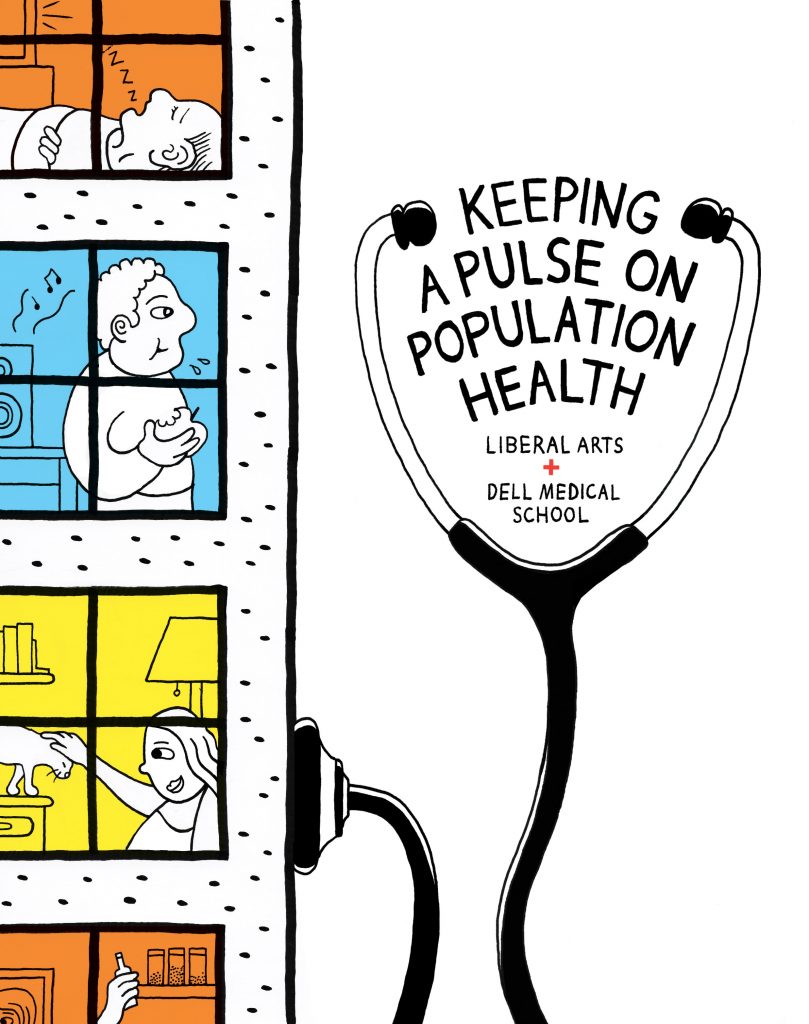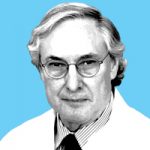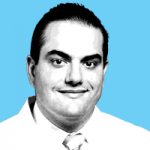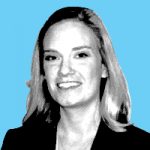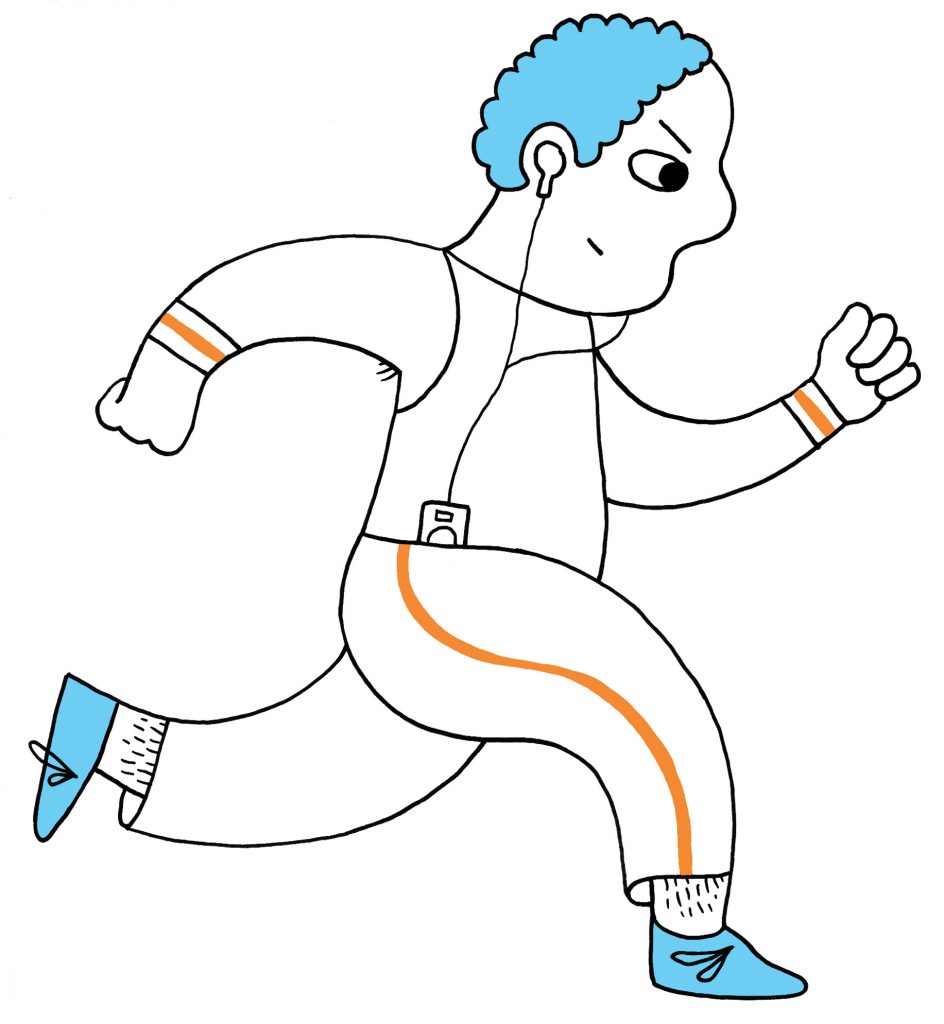A few years ago, a Plan II Honors student in Marc Musick’s sociology lecture came to him with a question. Musick had been talking about the shortage of doctors in rural and inner city areas. The student had grown up in the Rio Grande Valley and hoped to go on to medical school. Why, he asked, did this shortage exist?
Musick asked all of the students who wanted to become doctors to raise their hands. About 75 percent of the class did. Then he told all of those who had been raised in suburban areas of Austin, Dallas, Houston, and San Antonio to put their hands down. Nearly everyone did. That, he explained to the class, is part of the reason why there are so few rural doctors. Students who grow up in cities usually want to continue living in cities.
The new Dell Medical School is expected to welcome its first class of 50 students in 2016. The work done at the medical school will inspire research and questions for faculty and students in the College of Liberal Arts. Those questions will include some that are similar to the one asked by the Plan II student. How can access to health care be improved, and is that health care effective? Administrators and faculty in the College of Liberal Arts are already considering ways to collaborate with the medical school to improve health care.
The Vision
When The University of Texas was formed in the late 1800s, lawmakers who wanted to build the campus in Austin had to strike a compromise that would place the medical school in Galveston, the state’s largest city at the time. As UT and Austin grew, legislators and university leaders began to talk about the need for Austin to have its own medical school.
“It took a state senator with a passion and a vision to say we need a medical school in Austin,” says Dr. Sue Cox, referring to state Sen. Kirk Watson of Austin. Cox is the executive vice dean for academics at the Dell Medical School.
Three years ago, Watson developed a list of 10 health care goals for Austin to achieve in the next 10 years, including the development of a medical school. “Many of the things that he laid out are actually happening or completed,” Cox says.
The first phase of the medical school will include an education and administration building, a research building, a medical office building, and a teaching hospital run by Seton Healthcare Family.
“To be on this kind of campus, where the research is so phenomenal and the teaching is so phenomenal will benefit both the medical school and Austin,” Cox says.
Personalized Approach
Professors in the College of Liberal Arts are similarly excited about the opportunities provided by the medical school.
Chris Beevers, psychology professor and director of the Institute for Mental Health Research, expects that the Dell Medical School will bring increased funding and visibility for research at the institute. He also hopes that he will more easily recruit patients for his studies, a time-consuming task.
“Without a medical school, there isn’t a strong network of clinicians,” Beevers says.
He is working on a pilot study to look at the effectiveness of psychotherapy over the Internet in treating depression. Several hundred patients are being recruited, and a saliva sample is being collected from each patient. Researchers have already found that genetics plays a role in the effectiveness of antidepressants, and recent research suggests they might find the same for therapy.
“Can we predict who’s going to respond particularly well to this treatment?” Beevers asks.
Some areas of medicine, such as cancer treatment, are becoming more personalized based on genetics, but psychology hasn’t reached that point yet, Beevers says. His hope is that someday a pre-treatment assessment that includes a saliva or blood sample could be used to immediately choose the best treatment for people suffering with depression, preventing months of trial and error.
The medical school might help with another challenge that psychologists face: disseminating their research to clinicians.
“Many of the treatments that are available today were guided by clinician insights and weren’t necessarily strongly grounded in basic research,” Beevers says. In many cases, research has led to the development of more effective treatments, but those providing treatment aren’t aware of it.
“Whatever the practitioner is familiar with is what you end up getting,” Beevers says, and in some cases, it isn’t the state-of-the-art treatment that might be best for the patient. “Clinicians want to deliver optimal treatments to their patients—we simply need to do a better job of letting practitioners know about recent advances.”
Population Health
Collaborations with the College of Liberal Arts will help support the Dell Medical School. The medical school will be focused on population health—a research area of strength within the college—looking at who in the population receives health care and the effects of that care.
“The Dell Medical School will be different, from how we engage students and weave technology and teamwork into the curriculum, to how we create new delivery models that are focused on value and better health outcomes,” says Dr. Clay Johnston, the dean of the Dell Medical School.
That focus on improving care, especially to underserved groups, should dovetail with work already being done by faculty members in the College of Liberal Arts. UT’s Population Research Center is focused on finding the root causes of problems for these underserved groups.
“We’re interested in the underlying etiologies of health problems,” says Mark Hayward, director of the Population Research Center.
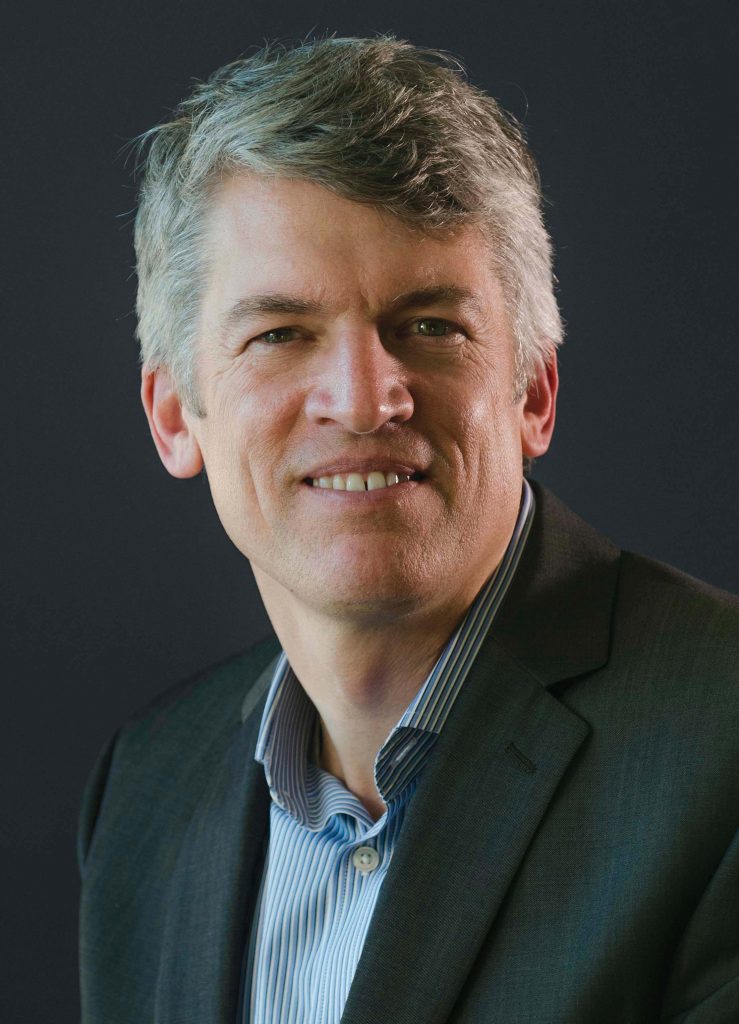
He provides childhood obesity as an example of a problem that researchers are exploring. They look at exposures in utero and during infancy that might influence obesity. They look at the role of poverty and family instability. Then they consider interventions.
“If you want the biggest bang for your buck, what do you change?” Hayward asks. Does changing the school lunch program lower obesity, or does intervention need to come earlier in children’s lives? Or both?
“Usually these problems are multi-factoral and complex,” he says. “They come from individuals. They come from families. They come from communities and the environment.”
“We will be measured not in the size of our buildings, but in the health of this community.”
Clay Johnston
To dramatically change health outcomes for a population, our country needs a continuum of efforts— improvements in family and community resources, a concerted effort on prevention, as well as resolving problems of health care access and improving health outcomes. A classic example is the battle to reduce smoking and smoking-related diseases such as lung cancer. Thanks to an array of public health policies that came into play at many levels over several decades, smoking rates plummeted in the United States, bringing improvements in life expectancy. A population health approach is tremendously important in improving the health of Americans.
He says the complexity of population health problems requires that people from different disciplines collaborate, and the medical school is a fundamentally important part of the work already being done by the College of Liberal Arts.
“This is a missing piece, looking at specific community health issues in a large-scale way,” Hayward says.
Access to Health Care
One of the biggest problems facing Austin and the rest of the country is poor health care access and outcomes for low-income people.
“Our less-educated groups, in particular, are finding life increasingly difficult and appear to be experiencing declines in their health in recent decades,” Hayward says. He notes that adult life expectancy in the U.S. has been declining among people with less than a high school education, particularly women, while adult life expectancy for those with a college education has dramatically improved.
“This is a very troubling trend in the inequality of mortality that we’re seeing,” he says.
Immigrants may also see declines in life expectancy in the future, Hayward says, with multiple causes for the decline. A significant portion of Hispanic immigrants, for example, are undocumented. This means that they and their families are less likely to receive health care than those here legally. This population also tends to work physically demanding jobs, and they are experiencing rapid increases in obesity and diabetes. UT will now have the resources to become a leader in research and health care for immigrant populations.
A new Community Care Collaborative was created to help administer the voter-approved funds— and to take advantage of federal money that those funds are helping to draw down for health care in Central Texas. The Collaborative augments the partnership between Seton Healthcare Family and Central Health, the organization that helps deliver care to low-income residents of Travis County. One of its goals will be to begin centralizing health records for many low-income residents—initially, this project will focus on settings in which care for underserved and vulnerable populations occurs most commonly.
“With our key partners, Seton Healthcare Family and Central Health, we are working together to identify priorities for improving the health of the people of Austin and Travis County, and particularly for the underserved,” Johnston says. “As I’ve said before, we will be measured not in the size of our buildings or our budgets, but in the health of this community.”
Notable Alumni Advancing Health Care
These UT alumni demonstrate how the insights gained from a liberal arts education translate into innovation and leadership in the medical field.
Dr. O. Howard Frazier, who received his undergraduate degree in history, went on to an acclaimed career as a cardiovascular surgeon, installing more heart assist devices and performing more heart transplants than anyone in history. He holds leadership positions at the Texas Heart Institute and St. Luke’s Episcopal Hospital. Frazier has credited his undergraduate work with instilling in him a desire to identify and follow his passion. In 2012, he received the Pro Bene Meritis Award, the highest honor bestowed by the College of Liberal Arts.
Dr. Vivian Harris Porche, who received her undergraduate degree in psychology, is now a professor in the Department of Anesthesiology and Perioperative Medicine at The University of Texas MD Anderson Cancer Center. She has said that her liberal arts education taught her how to be more approachable to patients and establish trust.
Dr. Alexander Eastman, a Plan II alumnus, was recently named an Outstanding Young Texas Ex. Eastman is both a lieutenant with the Dallas Police Department and an assistant professor of surgery at the University of Texas Southwestern Medical Center at Dallas. Eastman, who saved the life of a SWAT team colleague by performing emergency surgery at the crime scene, says a liberal arts education builds solid analytical and critical thought skills across a broad variety of disciplines.
Dr. Caroline Carter Marrs, a Plan II alumna, is a resident at the University of Texas Health Science Center at Houston in the Department of Obstetrics and Gynecology.
Medical Education
The College of Liberal Arts has already hosted many health care leaders to discuss disparities and potential solutions. In April 2013, it welcomed Dr. Paul Farmer as its C.L. and Henriette Cline Centennial Visiting Professor in the Humanities. Farmer is a medical anthropologist and physician who cofounded Partners in Health, an advocacy group. He is also chairman of the Department of Global Health and Social Medicine at Harvard Medical School.
During his visit, Farmer met with students, faculty members, and medical professionals to discuss his work. Farmer researches the role of social inequality in disease distribution and treatment, and he seeks ways to treat infectious diseases in areas with few medical resources.
A September 2013 conference at UT explored ways that medical education can be improved to reduce racial and ethnic health disparities.
Deborah Bolnick, associate professor of anthropology, organized the conference after discussions with others in her field about how best to tackle racial health disparities. The colleagues agreed that changing medical education could have the biggest impact, but medical schools already had an established curriculum.
“It’s really difficult to change medical training programs once they are established,” says Bolnick, who is also a Population Research Center faculty associate.
With the Dell Medical School still in the planning stages, Bolnick saw an opportunity to inspire better training. During the two-day conference, speakers from both Austin and across the country talked about human diversity and the similarities and differences between various ethnic groups. They discussed how environmental and socioeconomic disparities and racial discrimination can affect health. Then, they talked about what can be done to improve health outcomes and developed specific recommendations for medical training that could be implemented at the Dell Medical School.
“In most cases, the disparities we see have less to do with genetic factors and more to do with the social environment that people live in,” Bolnick says.
“Many of these factors involve broader social or institutional patterns that are more difficult to address,” Bolnick says. “As a society, we haven’t tackled them as we need to.”
Liberal arts courses can be a starting point for tackling these problems, says Musick, who is associate dean for student affairs in the College of Liberal Arts. Students who enter medical school need to understand that improving health care requires more than cutting-edge research and medication.
Musick says that many of his students insist that the United States has the best health care in the world because that is what they have heard from politicians or their parents. The United States spends more—by far—on health care than any other country, but health outcomes here are mediocre compared to other countries, he says.
“For many people, the world of health care is a very harsh place,” Musick says.
One role of a liberal arts education is to challenge these assumptions, to teach students to separate myth from reality. Musick strives to burst these myths in his lectures. He teaches students that access to quality health care is based largely on income and race. He encourages his pre-med students to think deeply about the area of medicine in which they will specialize.
“Students need to understand that they’re part of this process,” Musick says. Our society does not have to have such vast inequality in health care, he says. He wants students to consider the field that might allow them to make the biggest difference rather than the biggest paycheck.
Musick says that the Dell Medical School will provide new avenues for undergraduates to explore their career options.
“There will be volunteer opportunities; there will be opportunities to shadow people,” he says.
Those opportunities can help students choose a specialty and will improve their chances of getting into medical school, Musick says.
The Liberal Arts Difference
Whichever health care specialty students choose, a background in the humanities can help them connect with patients.
“With my liberal arts education as a foundation, I’m equipped with the most powerful interpersonal tools of all: understanding, compassion and empathy,” says Karin Zaner, a Plan II alumna who is a Dallas attorney specializing in health law at Kane Russell Coleman & Logan PC.
Another Dallas-based Plan II alumnus, Dr. Alexander Eastman, says “liberal arts is about building solid analytical and critical thought skills across a broad variety of disciplines.”
Recently named an Outstanding Young Texas Ex, Eastman is both a lieutenant with the Dallas Police Department and an assistant professor of surgery at the University of Texas Southwestern Medical Center at Dallas. He credits his education with allowing him to fulfill his childhood dreams of being a firefighter, doctor and police officer.
“These skills allow you to critically appraise a number of problems from a very learned, academic perspective,” says Eastman, who in 2007 saved the life of a SWAT team colleague—who had been shot in the neck—by performing emergency surgery at the crime scene. “Whether in the operating room or on the streets, critical thought skills are imperative every day.”
Musick notes the many ways in which liberal arts courses can help doctors and others in health-related fields connect with their patients. History and sociology classes teach about people who have been mistreated or ignored by doctors, helping explain why some mistrust medicine today. Ethics classes consider social inequality and human rights, including the debate about whether society has a duty to provide health care. Ethnic studies classes offer insights into the immigrant experience, with immigrants continuing to be a population that is underserved by our health care system.
Without this grounding in the humanities, medicine would be solely a business transaction, Zaner says.
“While advances in medicine are making the practice of medicine more and more precise and efficient, technology mustn’t be the sole focus for physician education and training,” Zaner says.
“A patient is more than a list of numbers and clinical measurements.”
